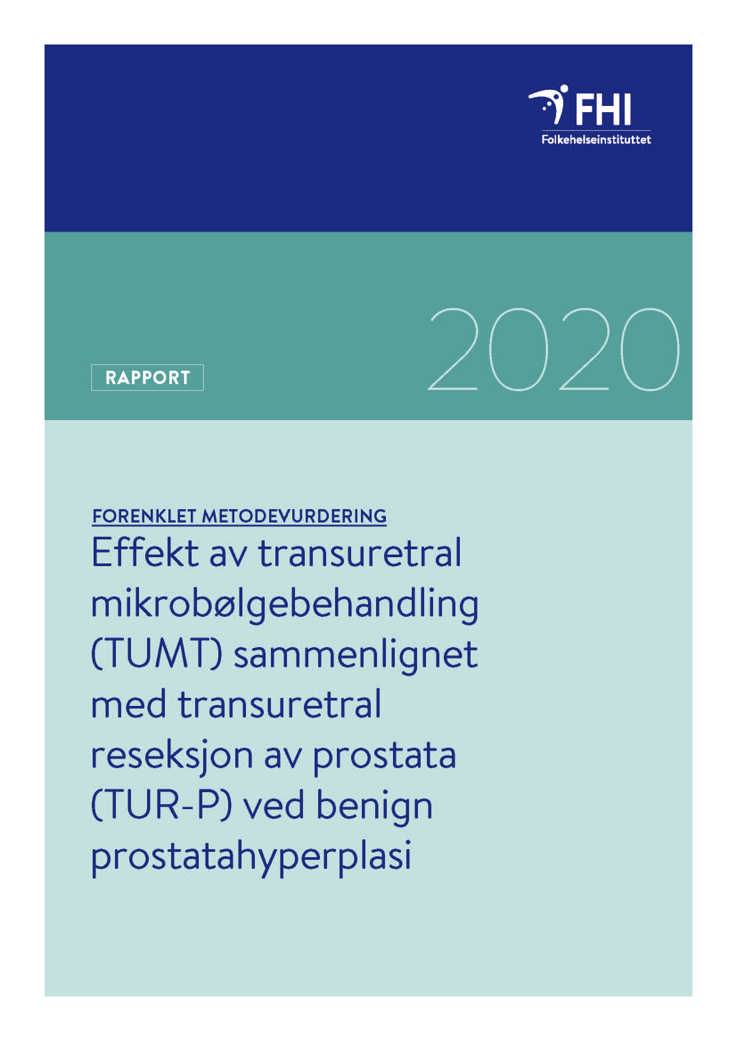Effectiveness of Microwave thermotherapy (TUMT) compared to transurethral resection of the prostate (TURP) for benign prostatic hyperplasia
Health technology assessment
|Published
The Norwegian Institute of Public Health was commissioned to summarize key findings from systematic reviews about the difference in effectiveness of Microwave Thermotherapy (TUMT) compared to Transurethral Resection of the Prostate (TURP) for men with benign prostatic hyperplasia.
Key message
The Norwegian Institute of Public Health was commissioned to summarize key findings from systematic reviews about the difference in effectiveness of Microwave Thermotherapy (TUMT) compared to Transurethral Resection of the Prostate (TURP) for men with benign prostatic hyperplasia.
We identified one systematic review including six randomised controlled studies. Briefly, the results showed that:
- There may be little or no difference in prostata symptom score (IPSS) improvement between TUMT and TURP .
- TURP may be better in improving dysuria, urinary retention, urin flow and prostate problems (AUA and Madsen-Iversen score) than TUMT .
- TUMT may perform better than TURP on the outcomes retrograde ejaculation and blood in the urine.
- TUMT probably reduces the proportion of patients experiencing TURP syndrome, strictures or blood transfusion, as compared to TURP.
- It is uncertain whether there is a difference between TURP and TUMT measured in clot retention, re-treatment, erectile dysfunction or incidence of urinary tract infection.
Comparisons of TUMT and TURP are ambiguous. Some results seem to favour TURP whereas others favour TUMT. All results are associated with uncertainty, and we generally haw low to moderate confidence in the evidence.


